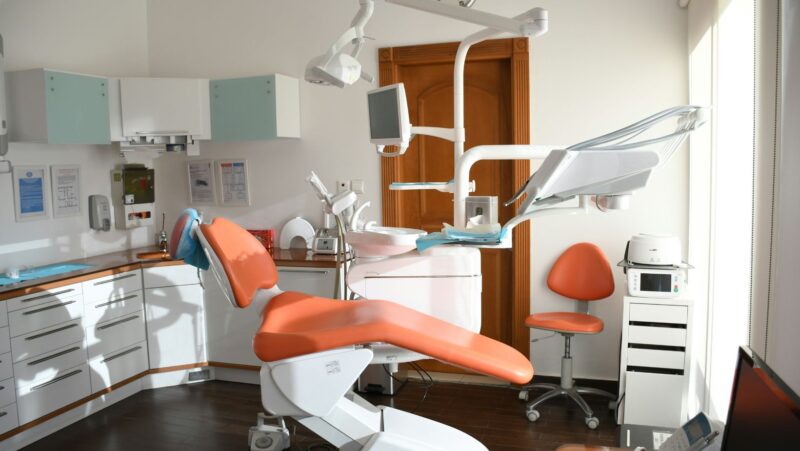Your CPAP machine has a number of settings. You can learn more about them here.
The 0.7 events per hour on cpap is a number that is usually reported with CPAP machines. It describes the average rate at which air is flowing through the machine.
Understanding the signs and symptoms of sleep apnoea
A constant flow of oxygen is provided by a CPAP machine, which may help you get a good night’s sleep. These units, on the other hand, may be a little difficult to grasp at times, especially if you’re just becoming used to how they work. Let’s clear up some of the ambiguity in this situation by looking at what the various readings mean. As a result, you can get the most out of these contemporary wonders.
If you’re worried that you may have OSA, a sleep test/sleep study performed by us or the NHS will help you figure it out. If Sleep Apnoea is confirmed, you will most likely benefit from (and be qualified for) CPAP treatment.
Index of Apnoea-Hypopnea
The AHI is one of the key indications we utilize in our sleep test report. There are additional indications, but I’ll describe the AHI, which stands for Apnoea-Hypopnea Index, to give you a basic sense of your possible problem.
When your airway narrows or partly collapses, you get hypopnea. Apnoea is a condition in which the airway totally closes. Apnoea, on the other hand, is a more serious problem. The AHI is the number of times your airway partly or completely shuts each hour. The AHI’s primary purpose is to assess the severity of your illness and how well your CPAP is functioning.
Let’s have a look at how this index is divided into various categories:
- Normal if there are less than five occurrences.
- Mild apnoea occurs between the ages of five and fourteen.
- Moderate apnoea is defined as apnoea that occurs between the ages of 15 and 29.9.
- Severe sleep apnoea is defined as a score of 30 or above.
Pressure
This measurement indicates the amount of pressure that the CPAP machine is providing to your airways, as you may have guessed. Keep in mind, however, that unlike an APAP or a BiPAP, most CPAP devices have a fixed pressure setting.
The key idea here is that you’ll need to locate the right amount of pressure so that your breathing isn’t obstructed throughout the night. While some people prefer to adjust this pressure to a lower value in order to feel more comfortable, this isn’t always the greatest choice.
As a result, it is prudent to seek the advice of a sleep expert. In a clinical context, he or she will be able to identify the proper pressure settings. After that, you may use them at home. If you need a variable amount of pressure, an APAP machine may be a good option.
Your pressure setting may be influenced by a number of factors.
These may include the following:
- A septum that is deviated.
- If your soft palate is prone to collapsing while you sleep.
- Allergies or a cold, for example.
- If your tongue relaxes to the point where it partly or completely covers your airway, you’re having trouble breathing.
Overweight people may also need a higher pressure setting. This is why it’s critical to seek expert guidance rather than adjusting the pressure on your CPAP machine yourself.
Leak
Despite the fact that this reading seems to be self-explanatory, there is a little more to it than meets the eye. The flow of air in your unit is usually measured in litres per minute. It’s quite normal for a little quantity of air to escape from the device. This is mainly owing to the fact that the mask has an exhalation port built right into it.
Leak values are taken into account throughout the production of your machine, and values that are within typical ranges are referred to as “intended leaks.” These leaks are partly designed to keep you from inhaling dangerous amounts of carbon dioxide while you’re in treatment.
However, you may observe that the “leak” indicator is often active at other times. If the CPAP mask is older than six months, this is quite typical. It may be time to invest in a new one. The leak indication may appear due to a variety of factors.
These are some of them:
- It’s possible that the mask is too large.
- A lack of seal may be caused by facial hair under your nose.
- The CPAP mask’s design may not be suitable for your face and mouth.
Leaks may sometimes develop unintentionally throughout the night if you abruptly shift positions while sleeping. If you think this is the case, you may want to consider investing in a mask-compatible pillow. To learn more about this option, speak with your doctor or a sleep therapist.
Ramp
This following feature may or may not be displayed on the display, depending on the design of your computer. When the unit is first turned on, certain units are intended to gradually raise or reduce the pressure. The primary goal of this choice is to make you feel more at ease while you’re going asleep (as opposed to being immediately exposed to full pressure levels). After then, the airflow will gradually increase (or “ramp up”) until it reaches a comfortable level.
You’ll note that the ramp symbol is active throughout this level. It may also show a numerical value. This is the time it takes for the ramp stage to complete in minutes (for example, 20 or 30). In the vast majority of instances, you will fall asleep long before the cycle is finished. If you see a significantly greater starting pressure or the ramp symbol suddenly vanishes, you should contact the manufacturer to investigate any possible CPAP machine problems.
When should I be concerned if my readings suggest a problem?
Finally, it’s a good idea to consider when you should seek expert help when dealing with one of these devices. The AHI (apnoea-hypopnea index) is perhaps the most important measurement to keep track of. However, certain circumstances, such as the following, may cause this number to fluctuate:
- If you’re sick.
- If you have a proclivity towards sleeping on your back.
- If you’ve lately received a prescription for muscle relaxants.
- If you drank alcohol before going to bed.
As a result, taking longitudinal data over 30 or 60 days is preferable. These will provide you a far more detailed picture of how your machine is impacting your health. However, readings that abruptly jump in the high range (more than 30 times per hour) for no obvious cause should be reported as soon as possible to a sleep expert. This may suggest a problem with the equipment or a need to change the therapy. Other indications, such as a leak or pressure changes, should, of course, be carefully watched as well. It’s possible that a unit may need to be upgraded to meet your specific situation.
Putting everything together
Knowing how to read your CPAP machine’s diagnostic display is essential to getting the most out of it. While units may vary depending on the manufacturer, this article should serve as a starting point. Make an appointment with your doctor as soon as possible if you have any further concerns or think that there is a problem with the unit.
A CPAP machine has a number of settings that are displayed on the machine. The resmed cpap events per hour is one of them.
Frequently Asked Questions
What do the numbers on my CPAP machine mean?
Most CPAP machines have a set of numbers on them that indicate the pressure settings. For example, if your machine has a setting of 10, it means that you are using 10% of your total pressure.
What are normal CPAP settings?
Normal CPAP settings are typically set to deliver a target pressure of 8-14 cm H2O.
What is a good resmed score?
Related Tags
- how to download cpap data from sd card
- how to read cpap data resmed
- understanding cpap readings
- what is a good ahi score on cpap
- cpap settings











